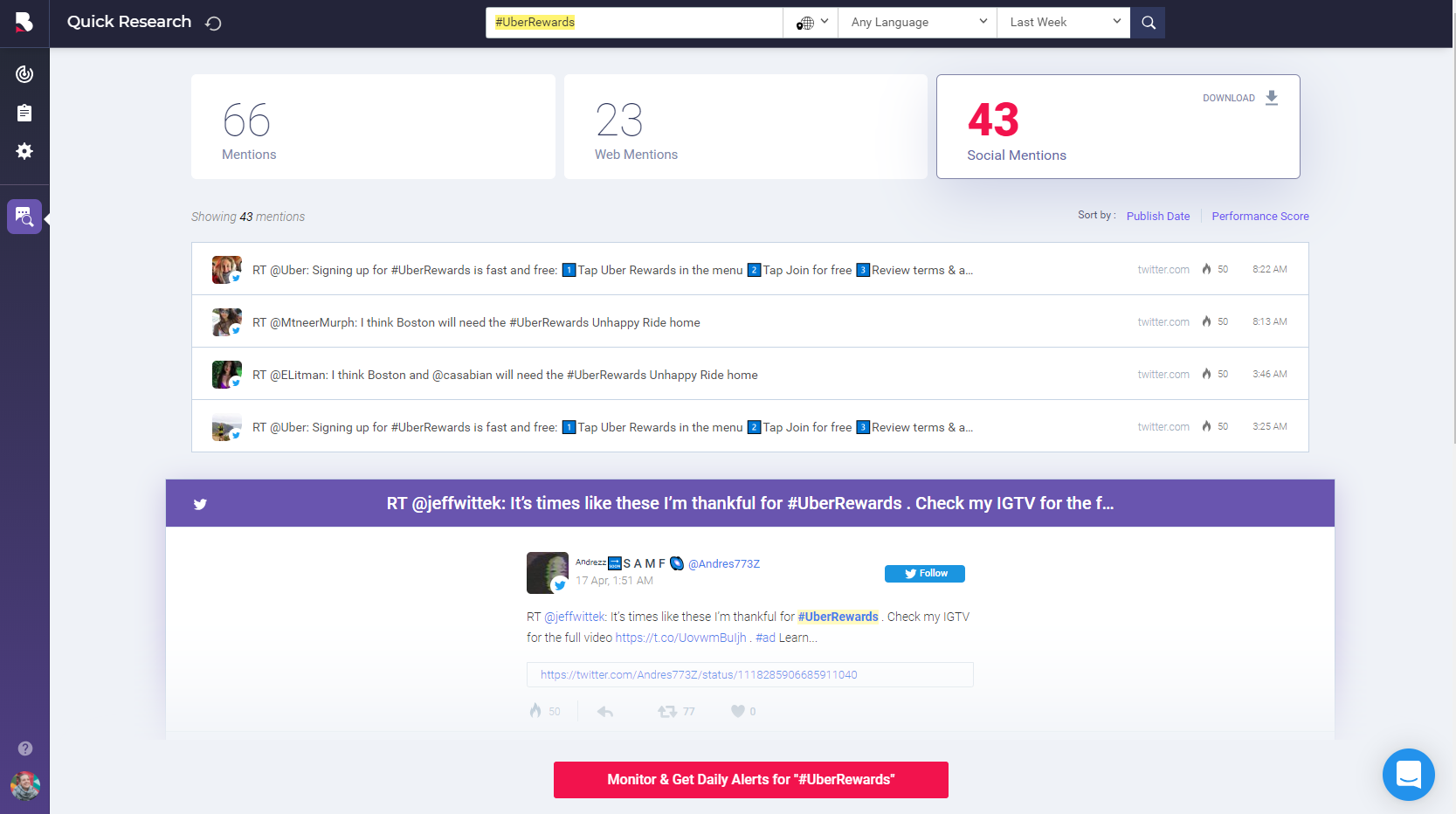A 10% audience growth might sound great but is it so when comparing with competitors? You can be sure that your product is the best but is it the most loved by your targeted audience? You have a great marketing idea but how do you know that your competitors have not already tried it?
There are dozens of social channels flooded with posts, likes, comments, reactions, conversations, etc. It would be insane to scroll each and everyone looking for the answer. So, we optimized the process of social media competitive analysis for you.
How to Track Your Competitors on Social Media
- Step 1 - Identify Your Social Media Competitors
- Step 2 - Narrow Down Your Social Media Competitors
- Step 3 - Make a Content Overview
- Step 4 - Get to Know Your Competitors' Engagement
- Step 5 - Check Your Competitors on Social Listening
- Step 6 - Monitor Competitors' Hashtags
- Step 7 - Investigate on Your Competitors' Allies
- Step 8 - Listen to the Buzz Around Your Competitors
In order to be the best, you need to be better
than others.
So put on some sunglasses, a hat and let’s do competitors’ spying. Having a good overview of your competitors’ social presence can help you by:
- using your competitors’ strengths as best practices to follow;
- turning your competitors’ disadvantages into your opportunities;
Before diving deep into the process, we warn you to limit yourself up to 3 months of going in the past and not further. Why? To keep it short, because social media is very dynamic. For instance, the lifetime of a tweet is 18 minutes.
Step 1 - Identify Your Social Media Competitors
By now we suppose you already know who your main competitors are. But you need to know that not all of them are your social media competitors.
Just for you to be sure, make one more hunt for your rivals.
A good trick to keep in mind would be to check review platforms to see other brands in your industry.
Take as an example G2Crowd, a review platform for online software and services. Choose the most relevant companies for you by demography, services provided, target group. I bet you didn’t know that Slack has so many competitors.
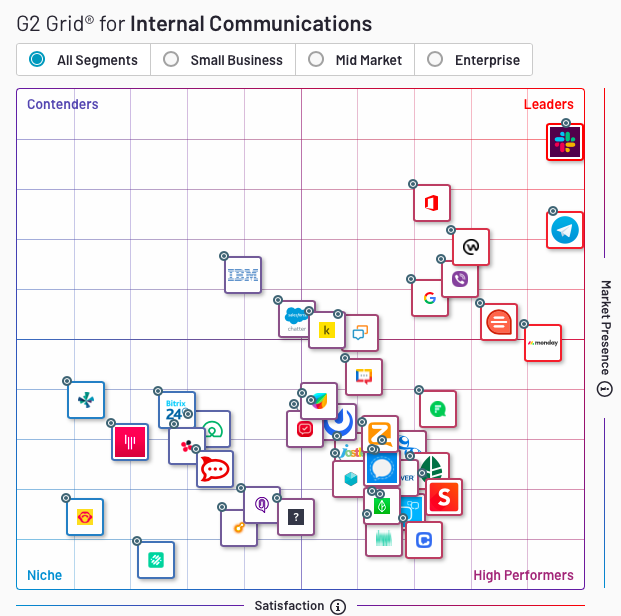
Now it's time to stalk them on social media. The easiest way to find your competitors’ social media profiles would be by going at the bottom of their websites.
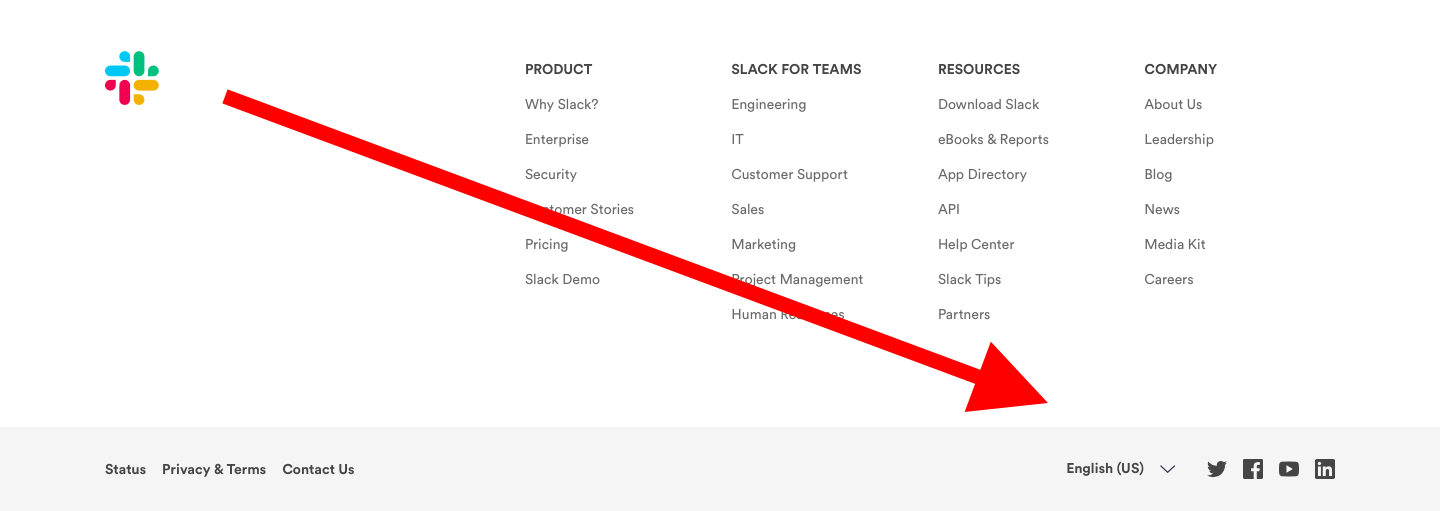
Want to see if they hide some social media profiles in the closet? Do a search on the most popular social media channels (there are around 20 of them). By an in-app search (manual search for the brand on a specific social media platform), we found one more Slack account.
Step 2 - Narrow Down Your Social Media Competitors
You don’t need to dethrone everyone, only those you consider that are eclipsing you online. Narrow down your list of social media opponents to a list of five competitors.
You might find it hard, but this list will help:
- Be realistic, don’t aim at giants like Apple, Amazon, Tesla etc.
- Select those with the most likes, followers, subscribers, etc. on their social media profiles. Here would be the moment to make a competitors’ overview spreadsheet
- Check if they are still active on those social channels. Back to Slack example, even though they have Instagram, they don’t really use it according to their last 4 posts.

Aim top five companies that are the most talked about by tracking their mentions using a proper tool.





As a side note, the temptation is big but we suggest you keep focused on 3-4 channels that are most relevant for you. Anyway, the tendency of 2019 is to keep all the attention in one place. The audiences prefer to resume their activity on the most favorite social media channels.
Step 3 - Make a Content Overview
Brand voice is what grabs people’s attention to a brand in the online world. It is essential to know your competitors’ brand voice which is reflected through the content. There are two ways to analyze social media content strategy:
- from a quantity point of view
- from a quality point of view
Content as quantity
Users’ behavior is different depending on the goals they have on a certain social media channel. Statistics offer some rough ideas on how to perform on social media.

Now would be the time to see how others reach their audience. So first comes first. See how often your competitors post per day, week, month, at what time periods, and on what days on average (do they post on Weekend, too?). It might seem primitive but now we should go back to our competitors’ overview spreadsheet. Complete your table with the selected top five competitors and social media platforms to monitor. Afterward, add column by column, each will represent a different criterion.
Content as quality
There are no perfect formulas to define the quality of the social media strategy. We would recommend you to analyze your competitors’ post based on two factors, type of content and message behind the post.
| The Type of Content | The Message Behind the Post |
| video | Promotional (sales, offers...) |
| image | Feedback (testimonials, reviews...) |
| music | Informational (news, product updates...) |
| podcast | Educational (How-Tos, tutorials ...) |
| blog post | Inspirational (quotes, jokes ...) |
| etc. | etc. |
These lists can be personalized and you can add new categories while you are going through competitors’ news feed. Count the posts of each type and statistically, you will be able to estimate what is the voice of your competitor.
Also, make an inspirational list, write down every good and bad idea that you noticed while looking through posts. Take advantage of good ideas to create better ones and bad ideas to avoid doing them yourself.
You should learn from your competitors but
never copy. COPY and you DIE
- Jack Ma, CEO Alibaba -
Last but not least, pay attention to paid social strategies. The audience growth of your competitors might be due to big investments in paid features like Facebook ads, boosted posts, etc.
Step 4 - Get to Know Your Competitors' Engagement
You competitors can have an army of social media marketers. Still, if they are not able to attract the audience’s eyeballs, they are useless. Manually or using analysis tools, spot the posts that drove the most reactions, aka engagement metrics (likes, shares, re-tweets, comments).
If your social media post is a hook then a comment
is a good catch.
The hardest reaction to reach is a comment because it requires users to analyze, think and type the comment. Your competitors’ posts with the most comments are the best or the worst practices for you, depending on the comments.
Engagement is a social media challenge. According to the Global State of Digital in 2019 Report made by Buffer, engagement rates on Facebook are only 3.75%.
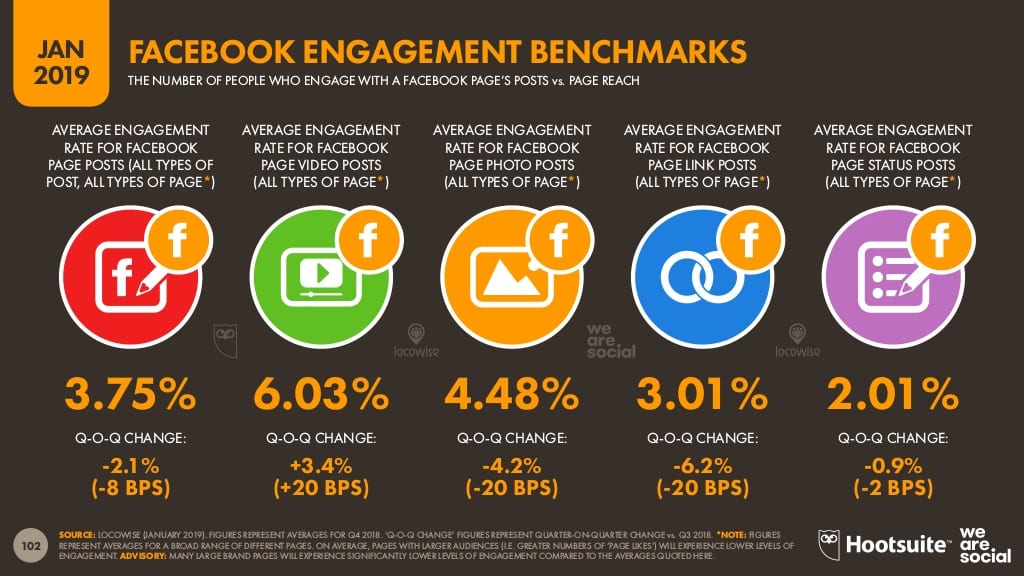
How many people interact with your competitors content, would be an awesome thing to track. There is a way to do this kind of competitor research on brands. Social Visibility from the cognitiveSEO tool crawls and extracts the social shares of your competitors' website and you can make an idea what pages from their site are the most loved by their audience.
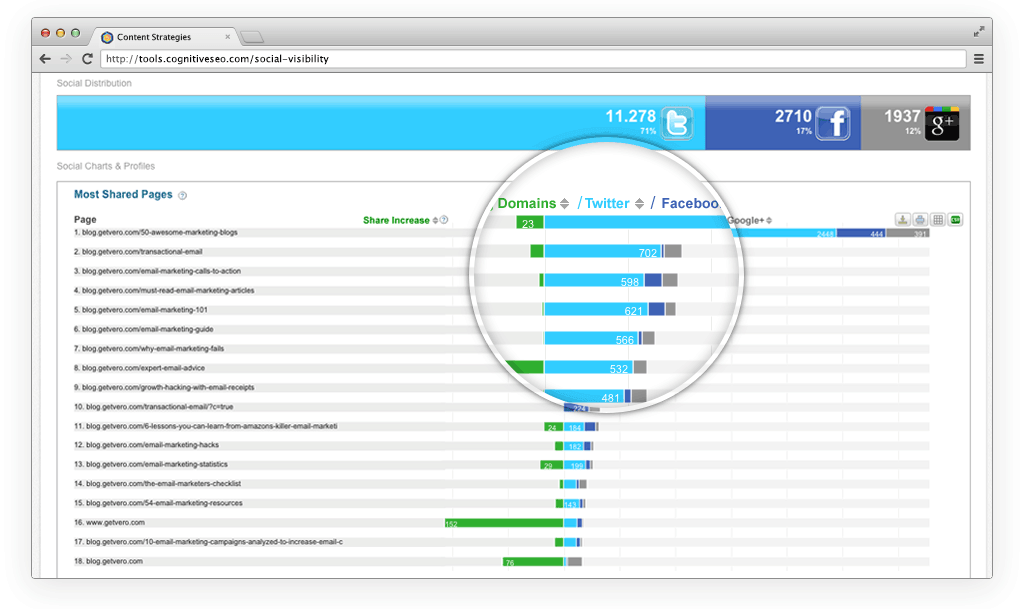
Step 5 - Check Your Competitors on Social Listening
Actions that convert the most are doing social listening, being responsive and offering exactly what the customers ask and need. Even statistics made by Sproutsocial proof that. Customers want you to be protective and attentive to them. Do your competitors perform customer care? Do they interact with their audience?
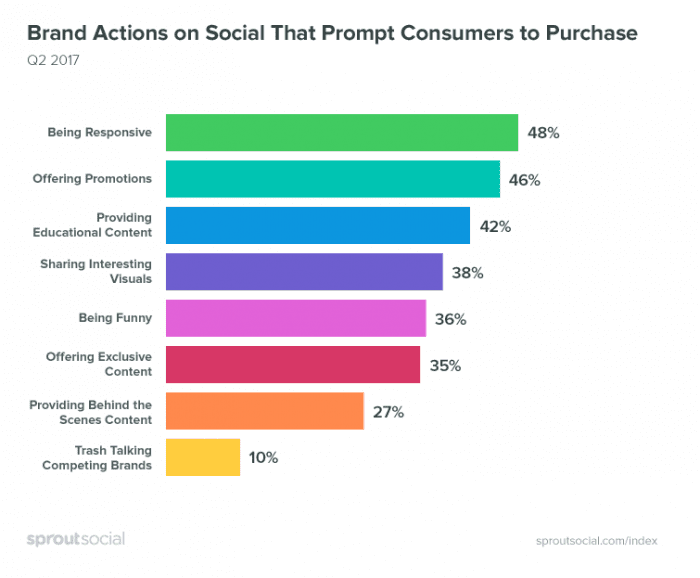
You can use specific analysis tools to find whoever is talking about your social rivals online. One of them, as you might guess, is BrandMentions.
According to the G2CROWD diagram from above, Workspace by Facebook is one of Slack’s rivals. They are pushing their product really hard by pop-ups and ads on Facebook but they are not really responsive on Twitter account. Their loss, Slack’s win.
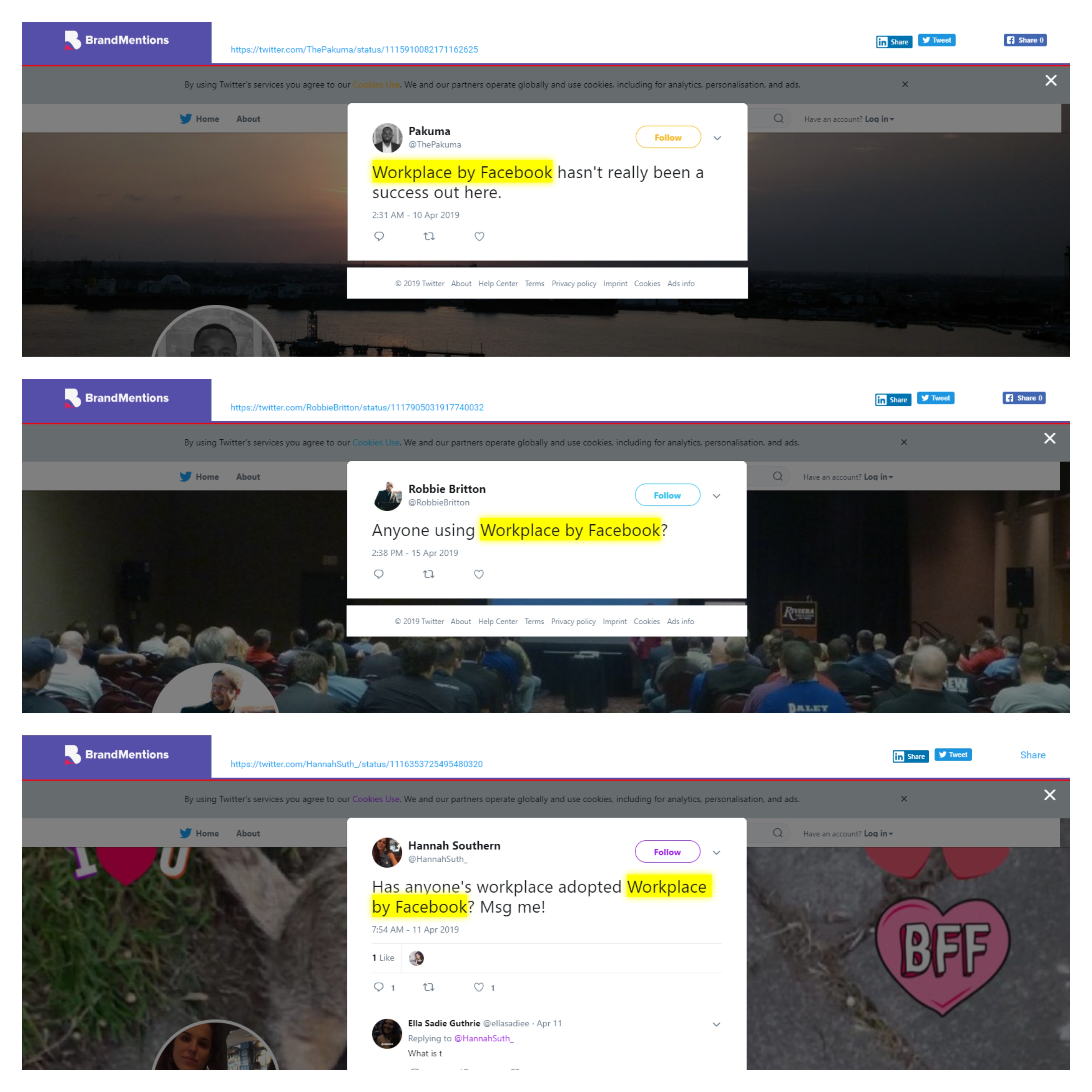
Social listening is a process that can bring you a lot of benefits like performing customer care, generating new leads, gathering product feedback, building personalized marketing campaigns, etc. For more info on this, see these 7 reasons why you should start doing social listening.
Step 6 - Monitor Competitors Hashtags
Hashtags are not only cool but extremely useful if you monitor them. There are at least 8 reasons to do so. Your social media competitors might already know these benefits and use hashtags to the fullest. It doesn’t take much to discover the success of their hashtag campaigns (if there is one).
1. Identify the campaign as we did for Uber

2. Search for the hashtag with proper analysis tools (like BrandMentions). Only for the last week, Uber got some positive feedback and a relevant number of people enrolled in their #UberRewards campaign. What would you do if you were Lyft, their competitor, doing this analysis on social media?
Step 7 - Investigate on Your Competitors' Allies
Get to know if your competitor is alone in this battle or not. His allies might be influencers and partners. While slicing and dicing his social media profile, keep an eye on the rival’s collaborations and affiliate programs. Does it promote or redirect its audience to other products? Does it have posts with influencers?
If you scroll Lyft (Uber's competitor) Facebook profile, you would notice their collaboration with Taraji P. Henson, an actress, and influencer that brought them 53k post likes, 1.8k comments, and 3.3M views.
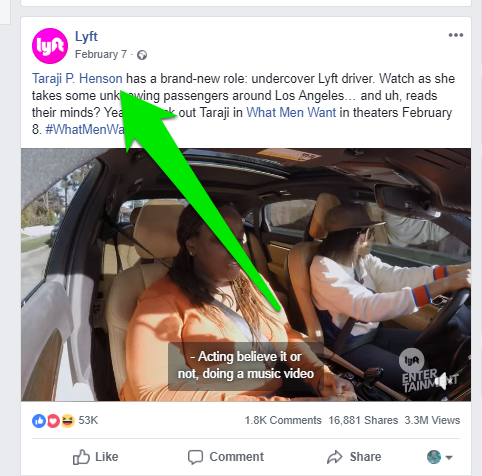
Or scroll through the company’s mentions to uncover other collaborations. Lyft got some of those. It would be a good material for Uber to think on.
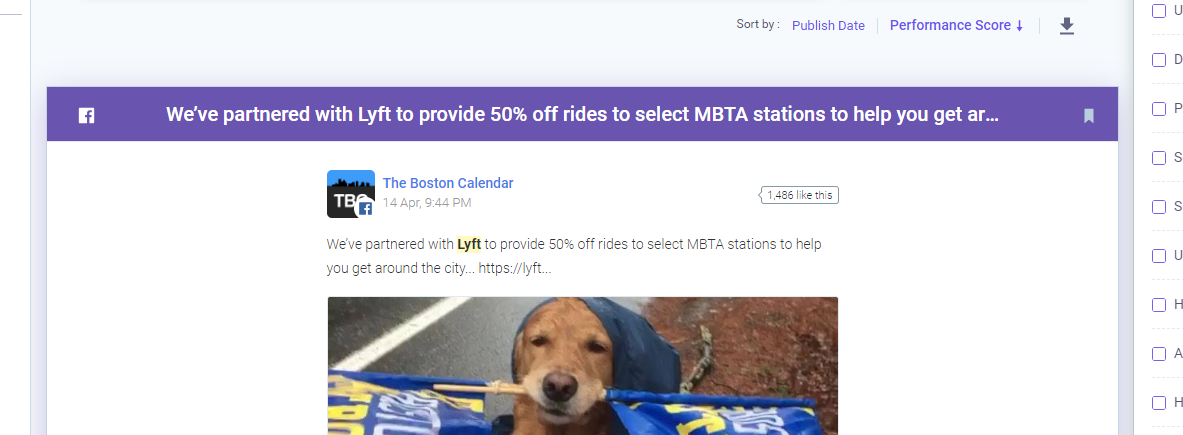
Your brand ambassadors have the power to win you some more followers, even your competitors’ followers. Collaborate with them in a modern way avoiding these common influencer marketing mistakes.
p.s. If you're interested finding affiliates for your own business, you need to know that is a process that combines having an excellent affiliate program and reaching out to people who might be interested in promoting your products. Finding the right affiliates is not an easy task since there are hundreds of affiliates out there. But here's a good guide on how to find them.
Step 8 - Listen to the Buzz Around Your Competitors
People are talking all over the internet, we can’t stop them. What we can do instead is listen to them.
Curious about what people like about your rivals?
Or what do they dislike?
Monitoring online conversations became more a need rather than a desire and competitor analysis tools were created to fulfill this need. Such a tool allows you to have all the brand mentions visible in one place, even your competitors' mentions.
Moreover, the developers behind it included features to easily process these data for you:
- Sentiment analysis that allows you to see only positive or negative mentions. If we were curious what people are unhappy about Lyft, apparently there are many YouTube channels and Vloggers unhappy about Lyft Stock;
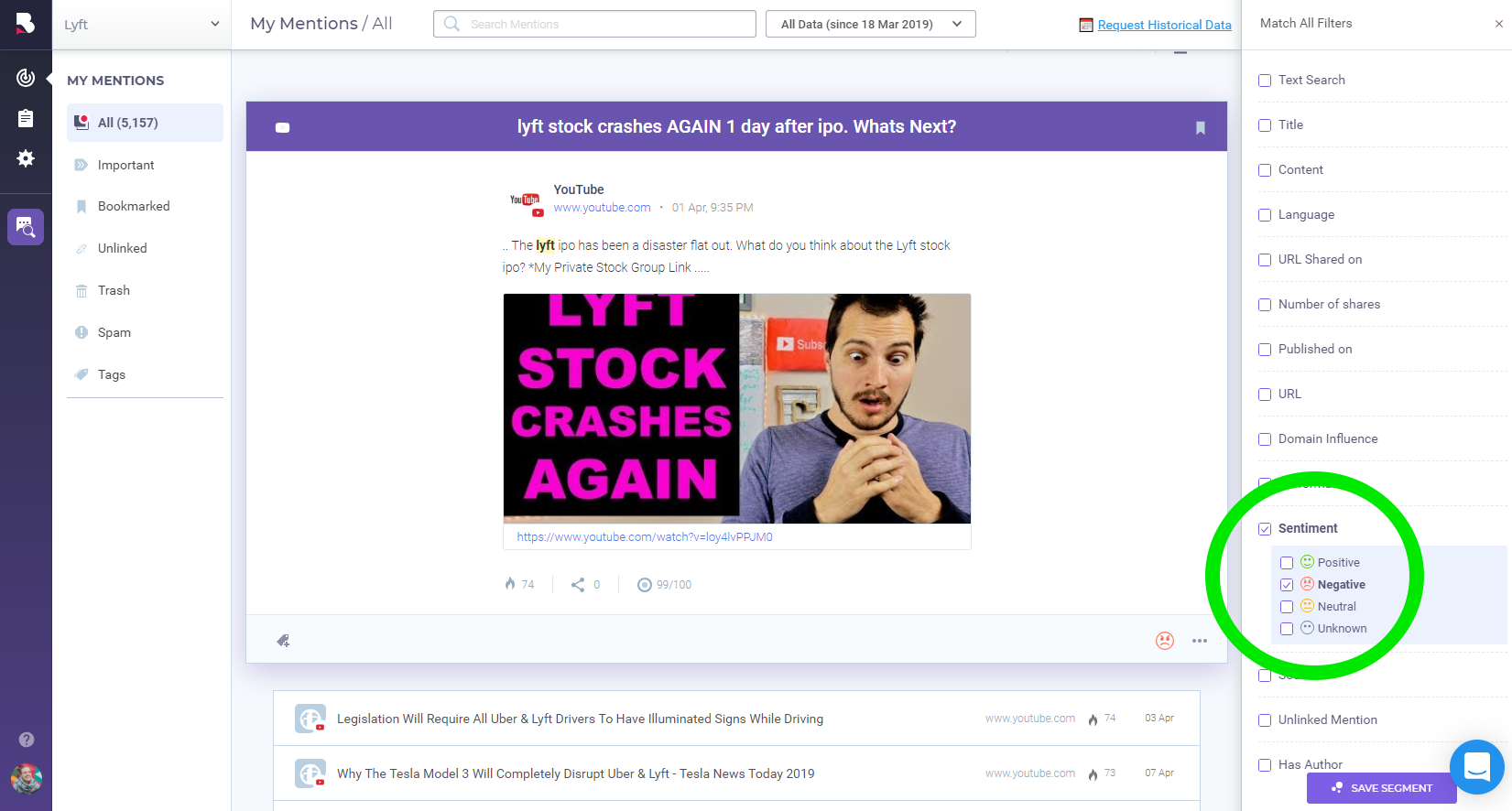
- Performance score that allows you to find the most popular mentions. For Lyft this video posted by UNILAD Sound went viral;

- The report that illustrates all the mentions yo have, detailed and structured accordingly to your needs;
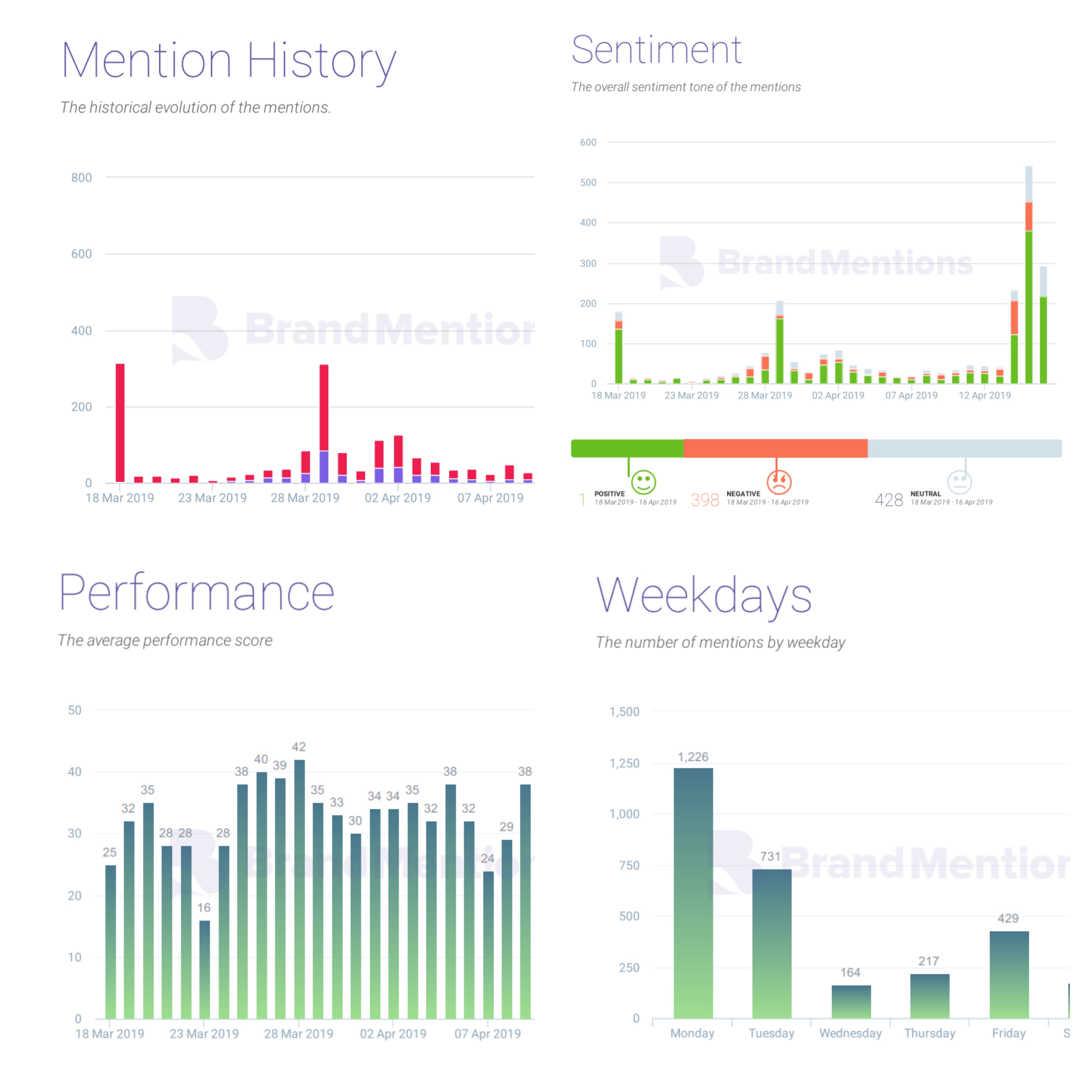
The Burrito of Conclusions
Let me make you a burrito with information you need to take and digest before grabbing your ninja costume to spy on your competitors' activities.
By monitoring your competitors on social media you aim at uncovering their social media strategy and their brand voice. Bad news, there is no perfect competitive analysis template for that but there are great monitoring tools that will help you.
Rely on your time, knowledge and analysis tools. Enjoy!




